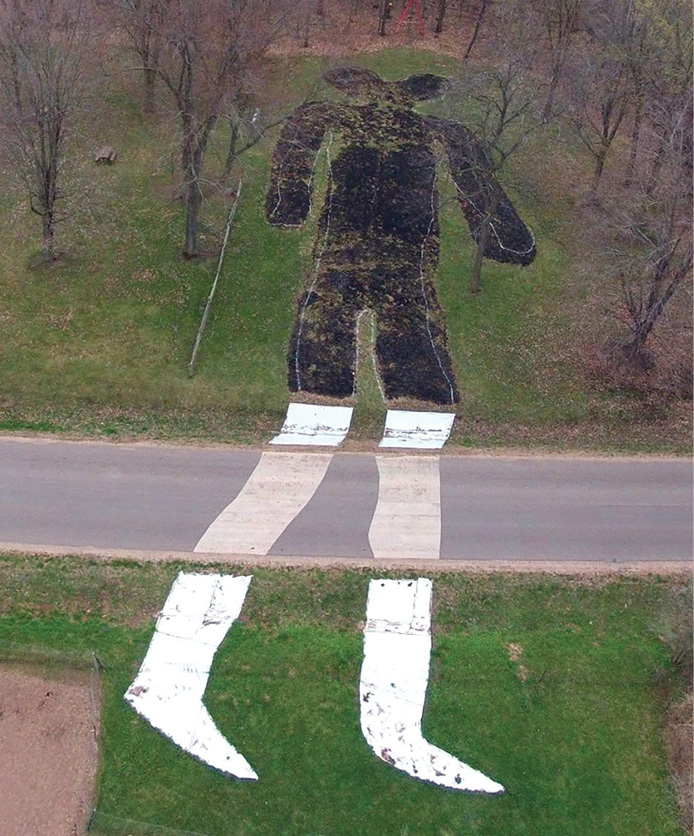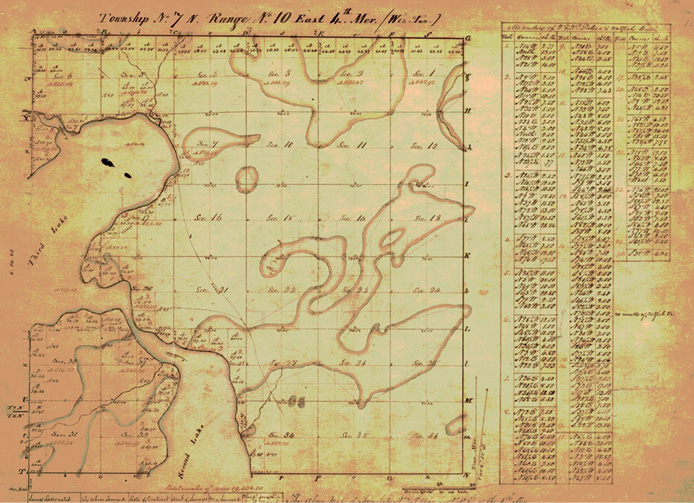Commentary
Considering the Value of Indigenous Knowledge and Practices
The Science Teacher—September/October 2021 (Volume 89, Issue 1)
By Sara Krauskopf
In April/May 2016, Canipe and Tolbert published “Ways of Knowing” in The Science Teacher, focusing on the contributions of Indigenous ways of knowing for exploring climate change. They raised the importance of discussing the knowledge of Indigenous people with students, along with challenging what we consider acceptable evidence and scientific practices. The article emphasized the benefits of bringing in observational narratives, stating “Research has shown that Indigenous ways of knowing can help students develop complex and multilogical understandings of the natural world.”
I want to build off of this and further discuss the need to acknowledge and respect the variety of cultural contexts in which knowledge is produced. The cultural dominance of Western science practices limits the questions we ask, the evidence we accept, and therefore, the completeness of our answers. As science educators, we should also consider how the way we may qualify the validity of Indigenous Knowledge can convey messages of superiority that perpetuate stereotypes and alienate Indigenous students (Bang and Medin 2010).
In my research of a professional development program focused on bringing Indigenous ways of knowing into Western science classrooms, I witnessed an event that magnified how the words of scientists and science educators can have unintended impacts. It also highlighted the long, nuanced path of becoming an ally and how as white educators, we must continually reflect on our words and actions.

During the professional development, a white, non-Indigenous archaeologist presented on the protection of Indigenous burial sites to a group of educators of both Indigenous and non-Indigenous heritage. Despite decades of experience working in collaboration with First Nations to protect burial sites, the manner in which the archaeologist presented his work stirred up controversy. His presentation focused primarily on the work and actions of white settlers and what they uncovered as sites were “discovered” in the mid-1800s. This rightfully included recounting the desecration of sacred sites as people dug into them searching for artifacts. He also noted efforts to map sites—recording shapes, locations, and orientations.
The archaeologist constructed a logical story of how and why Indigenous people created the burial sites. Significantly, although he acknowledged accounts collected by researchers in the 1800s from local First Nations Elders about how and why burial sites were built, he described the limited reliability of that information unless it was confirmed by other archaeological findings.
Many of the Indigenous participants present in the room for this presentation recognized and objected to the archaeologist’s authoritative way of speaking about the burial sites as if he were the foremost expert. Many of them were aware of oral histories that provided additional details about the creation of burial sites that told a more expansive story of their creation and cultural significance. Indigenous Knowledge, unlike most scientific knowledge is not universally shared. Oral histories are often told only at particular times of year, at specific events, and are often not shared with those outside their tribe, particularly with white researchers who have a history of misusing that information (Deloria Jr. and Wildcat 2001). Although the archaeologist was aware of these cultural differences and his lack of access to certain Indigenous accounts, his presentation came across to many attendees as placing too much weight on his own expertise while not giving enough credit to oral histories and present-day holders of Indigenous knowledge.
The manner in which scientists conduct and talk about their research can perpetuate inequitable perceptions about the reliability and value of Indigenous Knowledge compared with evidence collected using Western techniques. When scientists state their understanding is better and more complete, rather than complementary to or agreeing with the existing knowledge of Indigenous people, they not only deprive themselves of important information, but they also exacerbate the mistrust Indigenous communities feel toward scientists (Tuhiwai Smith 2012). Science educators are often seen as authorities as well, offering objective, definitive knowledge. It is important that both scientists and science educators keep a humble view of the limits of their knowledge and the techniques with which they collect it. Indigenous peoples often hold considerable knowledge of a particular place in their oral histories and traditional practices. That knowledge should be treated as valid evidence. Regardless of whether or not Indigenous students are knowingly present in the room, we want to speak to those limits. We should acknowledge the diversity of ways people come to know the world and not perpetuate a narrow view of science practices and knowledge.
As we work to help students create complex, multilogical understandings of the world (Kincheloe and Steinberg 2008), science educators must think about how we integrate and interpret knowledge derived in other cultural contexts. While we need to maintain standards for critiquing evidence, we must be open to considering other well-established means of investigating and conveying knowledge. History often proves that Western scientists are just “discovering” what Indigenous Knowledge-holders knew long ago—we need to remain open to that possibility (Nicholas 2018).
As someone with over 15 years of classroom experience and over five years working toward revising my own approach to science education as a white practitioner, I am well aware of the dissonance that comes from recognizing that the field you thought was objective is not, and the challenges that arise when we try to change the way we teach our subjects. Finding ways to educate ourselves about Indigenous ways of knowing the world and broadening our understanding of the history of bias and racism in science is a first step. It is also important that we incorporate a discussion of bias in science when we teach, and learn to recognize and validate different forms of knowledge that may come from our students, families and communities. In the section below I provide a few ways to start down the path toward change.

Suggestions for science educators:
- Learn about ways to expand your definition of what is acceptable as scientific knowledge, practice, and language. Read about different approaches to viewing the natural world. One accessible example comes from Robin Wall Kimmerer’s book, Braiding Sweetgrass. In this autobiographical set of essays, she talks about her work as a botanist and professor working in the Western science world, but artfully compares and contrasts that way of studying the world with her perspective and experiences as someone who identifies as a member of the Citizen Potawatomi Nation. It provides a window into her language, culture, transmission of knowledge and motivation for learning about the natural world.
- Learn about the Indigenous history of the place where you live and teach, and learn about the Indigenous people living in your area. Begin with the Worldwide Native Land Map (see references for links to websites) to identify which First Nations originally occupied the land you are on. Seek out the “American Indian studies” representative in your school, district, or state who can provide you with resources related to these groups. If you cannot access resources specific to your place, look to briefs from sources like the website “Indigenous Teaching Tools” to learn more about ways to include Indigenous ways of knowing in your classroom. If you live in the Great Lakes area, multiple organizations collaborated to provide a rich set of readings, videos, and educational materials about histories and current practices of local First Nations, which I list in the references.
- Speak to your students about bias in science. Scientists are human, and despite the way we depict the field as objective, science reflects the interests, values, and interpretations of those who do the work. Ask students about the limits of the studies they read about or the investigations they do themselves. What was included? What information did we miss? What would be another way to investigate this topic and gather more evidence? Who else could provide us with valuable insight? What is the value of including researchers of diverse backgrounds in designing and conducting a study? How does a person’s background, experience and language change the way they see the world? Bias is not necessarily bad, but it influences the questions we ask, the methods we use and the ways we interpret and share data. It is important to recognize the values and limits of this bias. Help students see scientists as humans with strengths and flaws, just like anyone else.
- For those looking for longer term solutions, build relationships with Indigenous organizations and individuals in your community. Many of these organizations exist in urban areas and are not found solely in locations near reservations. Attend events open to the public hosted by the Indigenous community, contribute to work important to those groups to build a more complex understanding of who they are and their cultural way of knowing the world.
- Inviting a guest speaker from a local First Nation can be a good way to provide students with other perspectives on particular topics, but be cautious of asking someone to come without some form of compensation. Start with school, district, or government experts first, as part of those paid positions often involves outreach and public speaking. If the guest speaker is volunteering their time, be aware of the extra labor placed on a person of color to inform non-Indigenous people about their story, and find a way to compensate them for their time or reciprocate in a valuable way. ■
Online Connections
Worldwide Native Land Map: https://native-land.ca/
Indigenous Teaching Tools: http://indigenouseducationtools.org/briefs
Wisconsin First Nations: https://wisconsinfirstnations.org/ (also useful for adjacent states)
Great Lakes Indian Fish and Wildlife Commission education materials: https://www.glifwc.org/
Sara Krauskopf (sjkrausk@wisc.edu) is a Lecturer at University of Wisconsin-Madison and Educational Consultant in Madison, WI.
Equity Inclusion Multicultural

